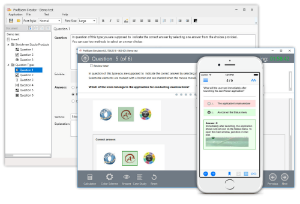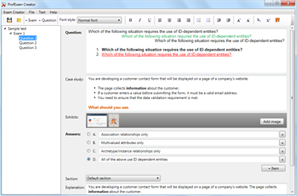File Info
| Exam | Associate Android Developer |
| Number | Associate-Android-Developer |
| File Name | Google.Associate-Android-Developer.VCEplus.2025-03-10.43q.vcex |
| Size | 31 KB |
| Posted | Mar 10, 2025 |
| Download | Google.Associate-Android-Developer.VCEplus.2025-03-10.43q.vcex |
How to open VCEX & EXAM Files?
Files with VCEX & EXAM extensions can be opened by ProfExam Simulator.
Coupon: MASTEREXAM
With discount: 20%
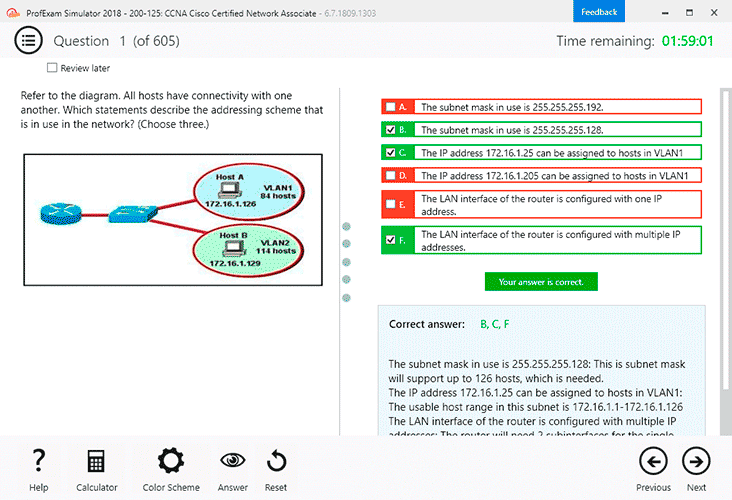

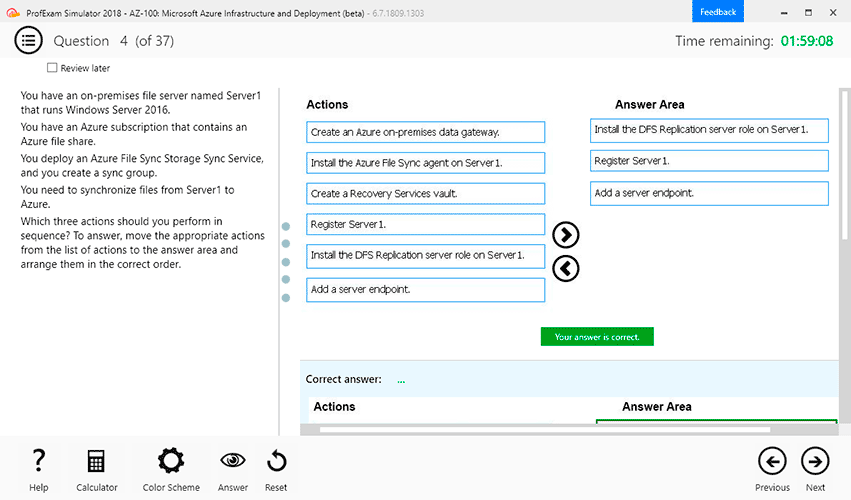
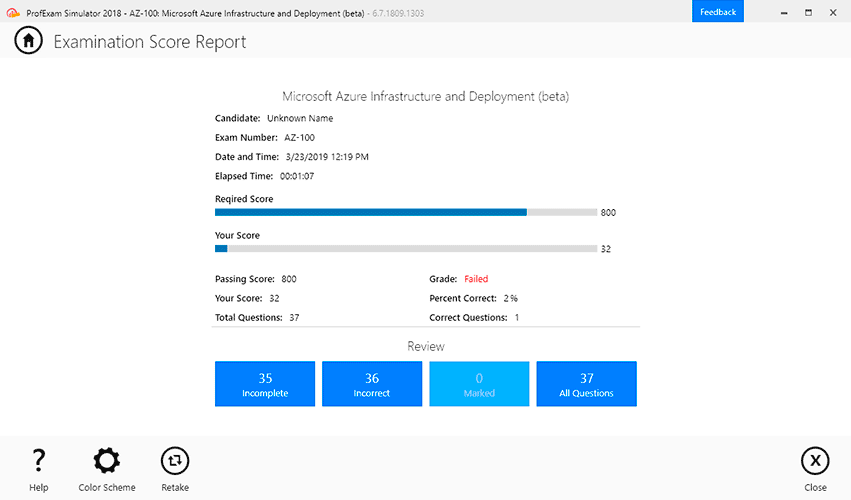
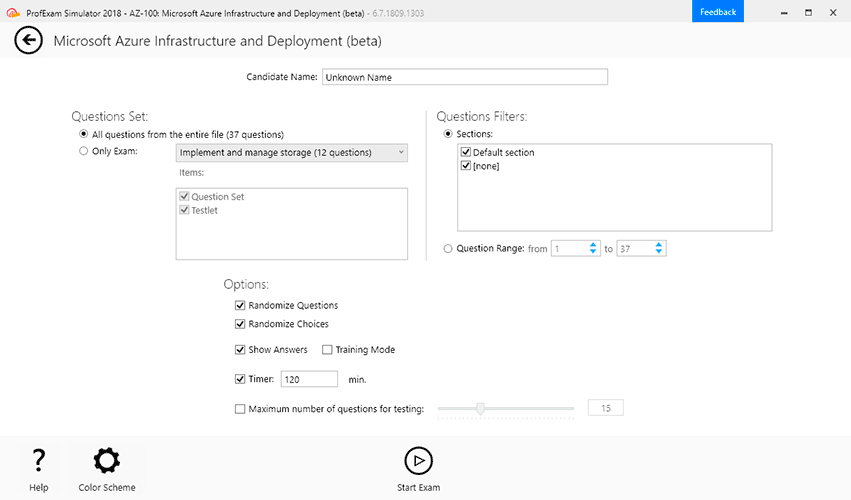

Demo Questions
Question 1
To handle an options menu item click in an activity, we usually should override method named:
- onKey
- onClick
- onOptionsItemSelected
Correct answer: C
Explanation:
Reference:https://developer.android.com/guide/topics/ui/menus Reference:
https://developer.android.com/guide/topics/ui/menus
Question 2
Working with Custom View. To define custom attributes, we can add <declare-styleable> resources to our project. It is customary to put these resources into a file:
- res/layout/attrs.xml
- res/values/attrs.xml
- res/raw/attrs.xml
- res/xml/attrs.xml
Correct answer: B
Explanation:
Reference: https://developer.android.com/guide/topics/ui/custom-components Reference: https://developer.android.com/guide/topics/ui/custom-components
Question 3
In application theme style, flag windowActionBar (<item name="windowActionBar">) indicates:
- whether the given application component is available to other applications.
- whether action modes should overlay window content when there is not reserved space for their UI (such as an Action Bar).
- whether this window's Action Bar should overlay application content.
- whether this window should have an Action Bar in place of the usual title bar.
Correct answer: D
Explanation:
Reference:https://developer.android.com/guide/topics/ui/look-and-feel/themes https://developer.android.com/reference/android/R.styleable.html Reference:
https://developer.android.com/guide/topics/ui/look-and-feel/themes https://developer.android.com/reference/android/R.styleable.html
Question 4
In application theme style, flag windowNoTitle (<item name="windowNoTitle">) indicates:
- whether this window should have an Action Bar in place of the usual title bar.
- whether there should be no title on this window.
- that this window should not be displayed at all.
- whether this is a floating window.
- whether this Window is responsible for drawing the background for the system bars.
Correct answer: B
Explanation:
Reference:https://developer.android.com/guide/topics/ui/look-and-feel/themes https://developer.android.com/reference/android/R.styleable.html Reference:
https://developer.android.com/guide/topics/ui/look-and-feel/themes https://developer.android.com/reference/android/R.styleable.html
Question 5
In application theme style, flag windowDrawsSystemBarBackgrounds (<item name="android:windowDrawsSystemBarBackgrounds">) indicates:
- whether this window should have an Action Bar in place of the usual title bar.
- whether there should be no title on this window.
- that this window should not be displayed at all.
- whether this is a floating window.
- whether this Window is responsible for drawing the background for the system bars.
Correct answer: E
Explanation:
Reference:https://developer.android.com/guide/topics/ui/look-and-feel/themes https://developer.android.com/reference/android/R.styleable.html Reference:
https://developer.android.com/guide/topics/ui/look-and-feel/themes https://developer.android.com/reference/android/R.styleable.html
Question 6
In application theme style, value statusBarColor (<item name="android:statusBarColor">) means:
- Color of text (usually same as colorForeground).
- Shows a thin line of the specified color between the navigation bar and the app content.For this to take effect, the window must be drawing the system bar backgrounds with R.attr.windowDrawsSystemBarBackgrounds and the navigation bar must not have been requested to be translucent with R.attr.windowTranslucentNavigation. Corresponds to Window.setNavigationBarDividerColor(int).
- The color for the status bar. If the color is not opaque, consider setting View.SYSTEM_UI_FLAG_LAYOUT_STABLE andView.SYSTEM_UI_FLAG_LAYOUT_FULLSCREEN. For this to take effect, the window must be drawing thesystem bar backgrounds with
- attr.windowDrawsSystemBarBackgrounds and the status bar must not have been requested to be translucent with R.attr.windowTranslucentStatus.Corresponds to Window.setStatusBarColor(int).
- The color for the navigation bar. If the color is not opaque, consider setting View.SYSTEM_UI_FLAG_LAYOUT_STABLE andView.SYSTEM_UI_FLAG_LAYOUT_HIDE_NAVIGATION. For this to take effect, the window must be drawingthe system bar backgrounds with
- attr.windowDrawsSystemBarBackgrounds and the navigation bar must not have been requested to be translucent with R.attr.windowTranslucentNavigation.Corresponds to Window.setNavigationBarColor(int).
Correct answer: C
Explanation:
Reference:https://developer.android.com/guide/topics/ui/look-and-feel/themes https://developer.android.com/reference/android/R.styleable.html Reference:
https://developer.android.com/guide/topics/ui/look-and-feel/themes https://developer.android.com/reference/android/R.styleable.html
Question 7
An overridden method onCreateOptionsMenu in an Activity returns boolean value. What does this value mean?
- You must return true for the menu to be displayed; if you return false it will not be shown.
- You must return false for the menu to be displayed; if you return true it will not be shown.
- You can return any value: the menu will be displayed anyway.
Correct answer: A
Explanation:
Reference:https://developer.android.com/guide/topics/ui/menus Reference:
https://developer.android.com/guide/topics/ui/menus
Question 8
Working with Custom View. Once you define the custom attributes, you can use them in layout XML files just like built-in attributes. The only difference is that your custom attributes belong to a different namespace. Instead of belonging to the http://schemas.android.com/apk/res/android namespace, they belong to:
- http://schemas.android.com/apk/res/[your package name]
- http://schemas.android.com/apk/[your package name]
- http://schemas.android.com/[your package name]
Correct answer: A
Explanation:
Reference: https://developer.android.com/guide/topics/ui/custom-components Reference: https://developer.android.com/guide/topics/ui/custom-components
Question 9
We have a custom view that extends android.widget.ProgressBar. Our progress bar is not touchable, focusable, etc.: it just shows progress. Style for our custom progress bar extends "Widget.AppCompat.ProgressBar.Horizontal". An item, named "progressDrawable", in our style, is a xml file . What we usually can see as a main single element in this xml file:
- A State List (<selector> element )
- A Layer List (<layer-list> element) with items android:id="@+id/progress" and android:id="@+id/background" inside it.
- An <ImageView> element with android:id="@+id/progress" identifier
Correct answer: B
Explanation:
Reference:https://developer.android.com/guide/topics/resources/drawable-resource Reference:
https://developer.android.com/guide/topics/resources/drawable-resource
Question 10
RecyclerView is a subclass of ViewGroup and is a more resource-efficient way to display scrollable lists. Instead of creating a View for each item that may or may not be visible on the screen, RecyclerView:
- creates a single list item and reuses it for visible content.
- creates an unlimited number of list items and never reuses them
- creates a limited number of list items and reuses them for visible content.
- creates a single list item and never reuses it
Correct answer: C
Explanation:
Reference:https://developer.android.com/guide/topics/ui/layout/recyclerview Reference:
https://developer.android.com/guide/topics/ui/layout/recyclerview
Question 11
Android uses adapters (from the Adapter class) to connect data with View items in a list. There are many different kinds of adapters available, and you can also write custom adapters. To connect data with View items, the adapter needs to know about the View items. From what is extended the entity that is usually used in an adapter and describes a View item and its position within the RecyclerView?
- RecyclerView.AdapterDataObserver
- RecyclerView.ItemDecoration
- RecyclerView.ViewHolder
- RecyclerViewAccessibilityDelegate
Correct answer: C
Explanation:
Reference:https://developer.android.com/guide/topics/ui/layout/recyclerview Reference:
https://developer.android.com/guide/topics/ui/layout/recyclerview
